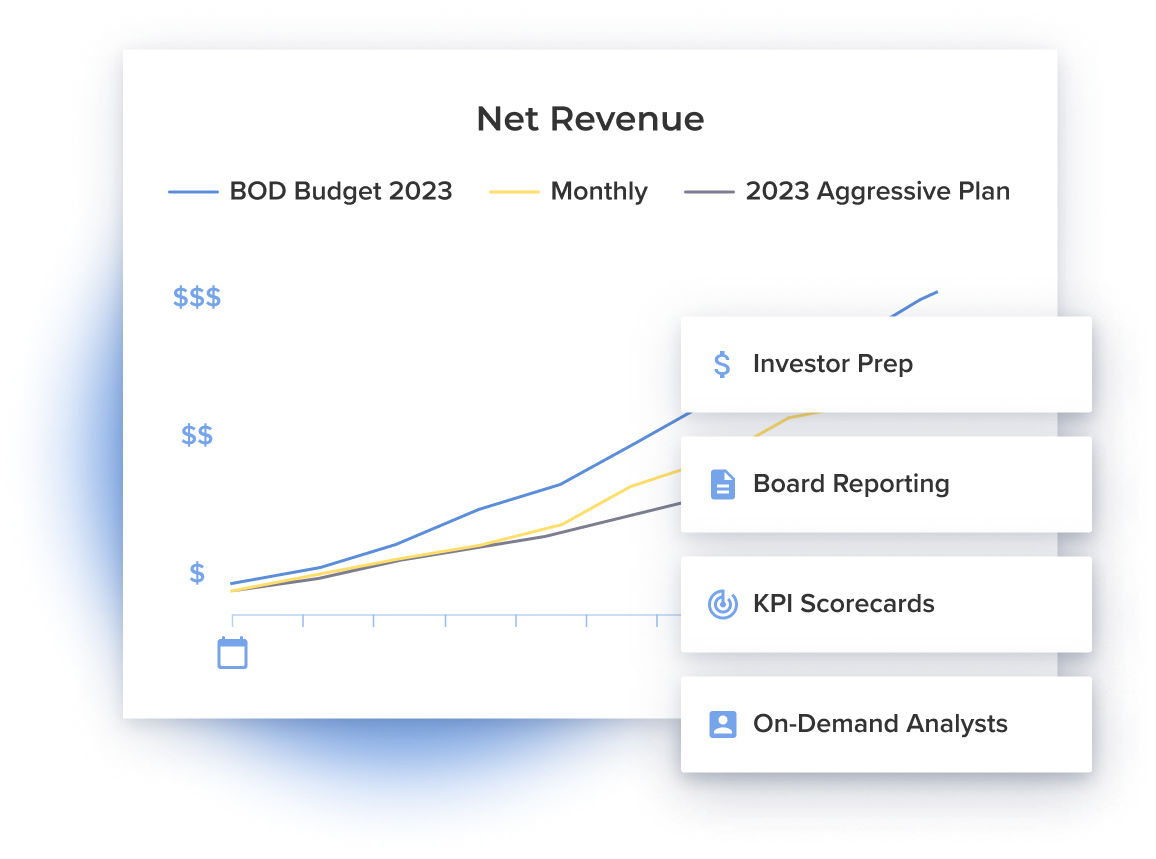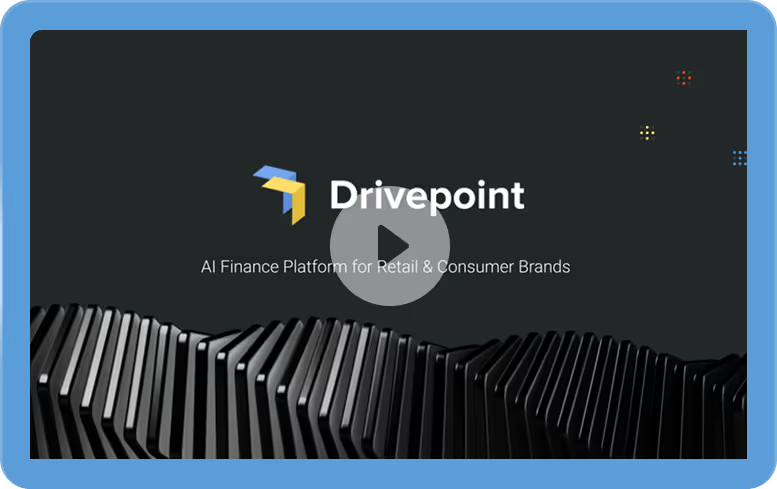Why Your P&L Is Your Secret Growth Lever: Expert Tips for Pre-Scale CPGs


Let’s face it: As a founder, you’re probably putting out a lot of fires. While it can be tempting to put them all out at once, it will serve your business better in the long term if you step back and think about which flames to douse first.
With the right strategic financial foundation in place — specifically, the right P&L statement — you’ll be able to see small tweaks you can make to cause the biggest splash.
A solid P&L will help you prioritize your best opportunities, set a game plan, and scale as sustainably as possible.
To learn more, we sat down with Mike Watts, Chief Growth Officer at HumanCo, who has helped launch six brands in thousands of retail doors. In this guide, Mike summons his deep CPG knowledge to walk us through how to make the most out of your P&L.
Why there’s no such thing as one-size-fits-all scaling
"There’s no single playbook that works for every brand. Don’t measure yourself by the common industry KPIs. Set goals that address the unique challenges of your business."
Mike, who’s scaled many a scrappy business — including now-beloved CPGs like Yasso and Grillo’s Pickles — says it’s a common misconception that all CPG startups must follow the same script. Every young brand faces its own unique challenges and requires its own playbook to address them.
To set your own script and figure out which KPIs matter the most to your business, he recommends digging your teeth into your FP&A function from the get-go. Mike says he’s seen many brands put their FP&A on hold to focus on building only product and brand. As a result, many founders will outsource their financials to accounting teams or bookkeepers who are unfamiliar with CPG — just to avoid the hassle and distraction of managing their finances.
Mike cautions against this tactic because it could cause you to burn cash too quickly. Instead, he suggests using the data in your P&L to guide your growth. By looking at each line item and figuring out which variables need to be manipulated, you can use your finance function to chart the most profitable path forward.
Step 1: Build a sturdy P&L
"Your financials are every bit as important to your brand’s growth as any other branch of the business. If you know how to use your data correctly, you can use it to scale quickly and create better focus for the broader team."
A well-built P&L functions as a window into your business’s overall health, offering granular and big-picture insights that your whole team can keep coming back to. It should look both forward and backward, showing you where you stack up to past plans and what your future plans look like.
Because the P&L offers a bird’s eye view, Mike says it can also alleviate the perception that you need to put out every fire at once. It will show you which fires you should actually put out and which are better to let quietly burn. As a rule of thumb, you should prioritize the lowest-effort, highest-ROI fixes. “Sometimes,” he says, “all you need to do is adjust a metric or pull a lever to instigate significant change.”
Let’s say you notice that your commodity costs have jumped 30% even though you're not spending a lot on trade. In that case, you can analyze your P&L to pinpoint a solution. If the fix is easy, then you’re good to go. On the other hand, if your P&L indicates that a certain adjustment won’t see returns, it’s probably a good idea to ignore that fire for the time being and look for an alternative.
Step 2: Cherry-pick your biggest business drivers
"Sometimes your biggest business drivers are actually just the easy fixes. It’s sexier to say your goal is to get into 1,000 doors, but what you actually need to do first is probably something more foundational, like improving your margins."
Every pre-scale CPG dreams of getting into as many doors as possible. But Mike cautions against setting grandiose goals without first familiarizing yourself with the intricacies of your P&L. Chances are you’ll need to tackle some of those minor adjustments before you can ladder up to your loftiest goals.
For example, if you have low gross profit margins, making a rapid transition into wholesale probably isn’t going to be sustainable. Your trade spend will likely offset the earnings from increased visibility. That’s why Mike suggests starting with the lowest-hanging fruit — which, in this case, would be those margins.
Your P&L will tell you precisely how much you need to improve your margins to show success and grow top-line revenue.
Even though such goals might seem modest, Mike says they’ll get the flywheel turning so you can move to the next stage of growth as quickly and sustainably as possible.
Step 3: Make a strategic plan with clear workstreams
"Most businesses want to develop a path toward scaling distribution, but you have to think through which items have the potential to be your most effective trial drivers. These are usually the items with high velocity and strong margins."
Once you’ve identified your best opportunities, you need to know what specific actions are required to seize them and a road map to help get you there. Your map should start with small steps — like increasing your gross profit margins from 10% to 20% — and build up to bigger ones, like scaling your distribution and expanding your hiring.
Mike recommends staggering your goals into distinct phases with clear workstreams assigned to each phase. To figure out your workstreams, he suggests asking:
- What steps will it take to get there?
- What negotiations can you make to drive down your fulfillment costs?
- How much can you cut back or lean into promotional discounting?
He then uses the P&L to pace each phase and understand its long-term impact on the business. For example, when it was time to scale Grillo’s Pickles, the number one goal was to expand distribution. But Mike’s team knew they needed to increase their margins if they were going to have the most successful rollout.
One of the brands Mike worked with noticed an eye-opening insight on their P&L: Their anchor product, which had been driving distribution and trade spend, had low margins. Meanwhile, another product in the portfolio had even stronger velocity with higher margins. So, the team shifted their distribution and promotional strategy to focus on the margin accretive item.
“Even if you have to change your plans to prioritize stronger margins, you can still drive brand awareness,” Mike notes. “And then, when core products are successful, you can start expanding into new products and flavors.”
The result? The brand was able to successfully expand distribution on multiple products very quickly.
Step 4: Reevaluate your P&L after every growth stage
"A good P&L accurately reflects the current state of your business and your North Star metrics at that moment."
A business’s needs change over time — especially when you’re scaling — and you need a nimble P&L that can grow with you. Mike thinks of the P&L as a living thing that reflects the most current state of your business. So he recommends returning to your P&L once each stage is complete.
First, verify that your P&L is still tracking the right metrics and asking the right questions. If new variables have recently come into play, like, say, ballooning freight costs or a new coupon strategy, rework it to account for their impact.
Reviewing your P&L will help you see how you’re performing against your forecasts and gauge whether or not your goals have changed. If you’ve just expanded your hiring, go back to your P&L. If you’ve just invested more in marketing, go back to your P&L. Has everything gone according to plan?
Mike recommends Drivepoint to supercharge your P&L
"A lot of founders are very tactical in nature and reluctant to transition into more strategic roles. Drivepoint shows you that getting a handle on your FP&A doesn’t have to be hard."
Drivepoint empowers founders and operators like Mike to reclaim control over their FP&A and take a more strategic approach to their business’s finances.
With Drivepoint, you can:
- Put all your data for every channel, including Amazon, wholesale, and DTC, in one place
- Unlock surprising financial insights and opportunities
- Create a P&L that makes sense to everyone
Subscribe to our newsletter

Ready to see what you can do with Drivepoint?
Learn how other consumer and CPG brands are driving margin and cashflow with Drivepoint








